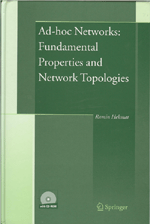1. Reliability E-Newsletter Wayne Tustin knows vibration and shock testing and measurement. The Equipment Reliability Institute offers consulting, training courses, and distance learning in a wide range of vibration-related topics. Check out the Web site if you're interested in vibration test and measurement. You can also sign up for the quarterly e-newsletter. Follow the link to read past issues and sign up to receive future ones. www.equipment-reliability.com/news.htm
2. Equation Repository Check out EquationSheet.com and you'll find a neatly arranged collection of equations (for algebra, chemistry, physics, statistics, signal processing, and more) in addition to constants, SI units, and conversions. If you're especially hardcore, and you use LaTeX (a non-WYSIWYG typesetting system), you can even find LaTeX utilities. In a clever twist, registering allows you to create a customized list of equations or constants or what-have-you. www.equationsheet.com
3. Visualization Methods Now here's a clever idea. If you need to represent data in some visual way, but you can't decide what form that representation should take, have a look at this Periodic Table of Visualization Methods. As you put your mouse over the various entries of the table, a pop-up window shows you an example of the particular visualization method. I had no idea there were so many! www.visual-literacy.org/periodic_table/periodic_table.html
New to Bookshelves
 |
Ad-hoc Networks: Fundamental Properties and Network Topologies
Author: Ramin Hekmat
Publisher: Springer
ISBN:1-4020-5165-4
Page count: 146
This book focuses on the fundamental properties of ad-hoc networks. It explores a new mathematical model of these networks and also proposes a new method for calculating interference statistics.
Based mainly on research conducted by the author at Delft Univ. of Technology in The Netherlands, the book is divided into eleven chapters. These are, in order: Introduction to Ad-hoc Networks, Scope of the book, Modeling Ad-hoc Networks, Degree in Ad-hoc Networks, Hopcount in Ad-hoc Networks, Connectivity in Ad-hoc Networks, MAC Protocols for Packet Radio Networks, Interference in Ad-hoc Networks, Simplified Interference Estimation: Honey-Grid Model, Capacity of Ad-hoc Networks, and Book Summary (wherein the author summarizes the general approach taken and conclusions reached).
Each chapter includes illustrative diagrams and figures, relevant mathematical expressions, and a chapter summary. Finally, there are two appendices. The first explains Ant-routing, the software simulation tool devised to help study network performance metrics and based on the type of adaptive routing practiced by ant colonies. The second lists the symbols and acronyms used in the book.
This is an academic work, aimed at an academic audience. It is not light reading but this slim volume contains a great deal of information about an interesting and increasingly important topic.